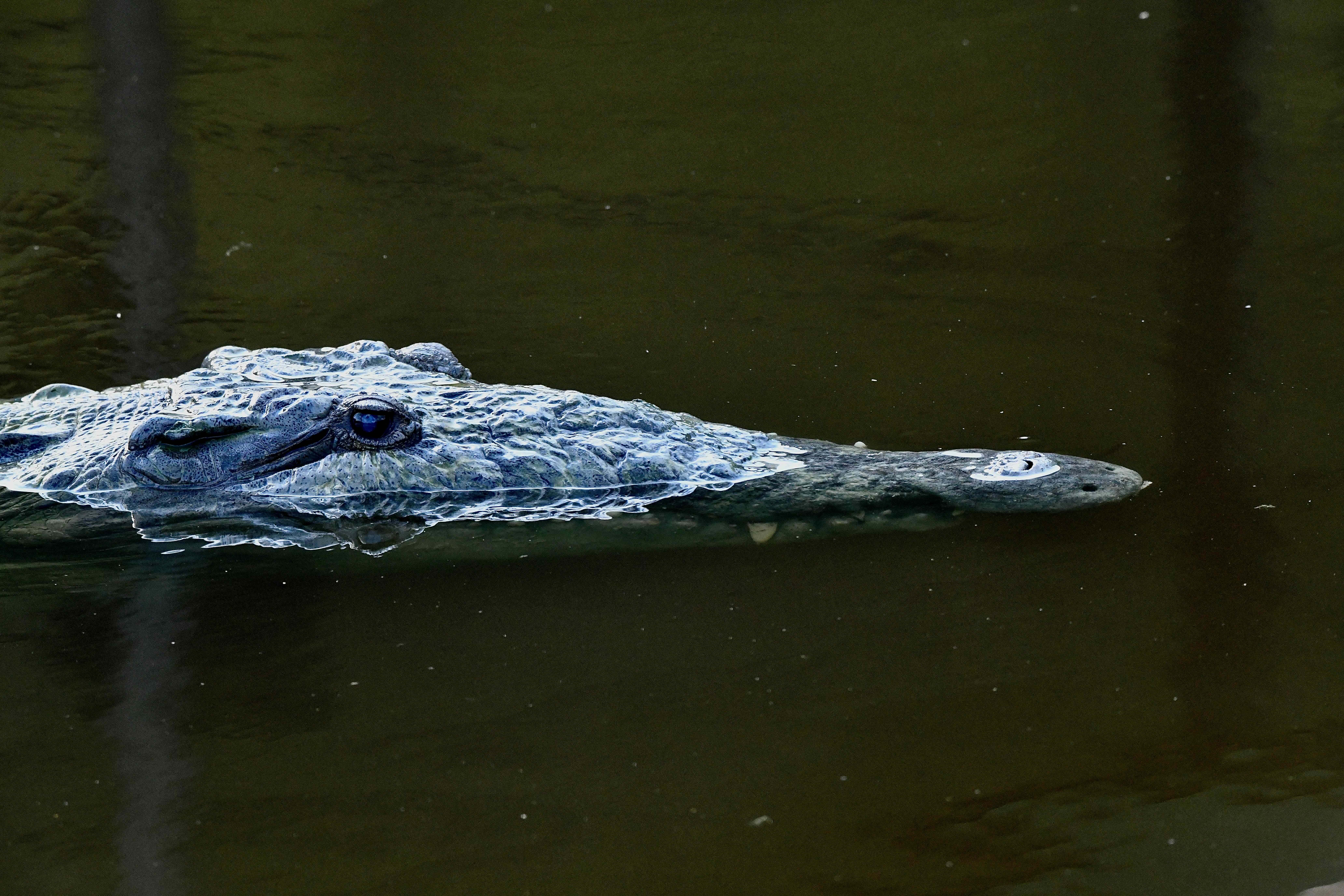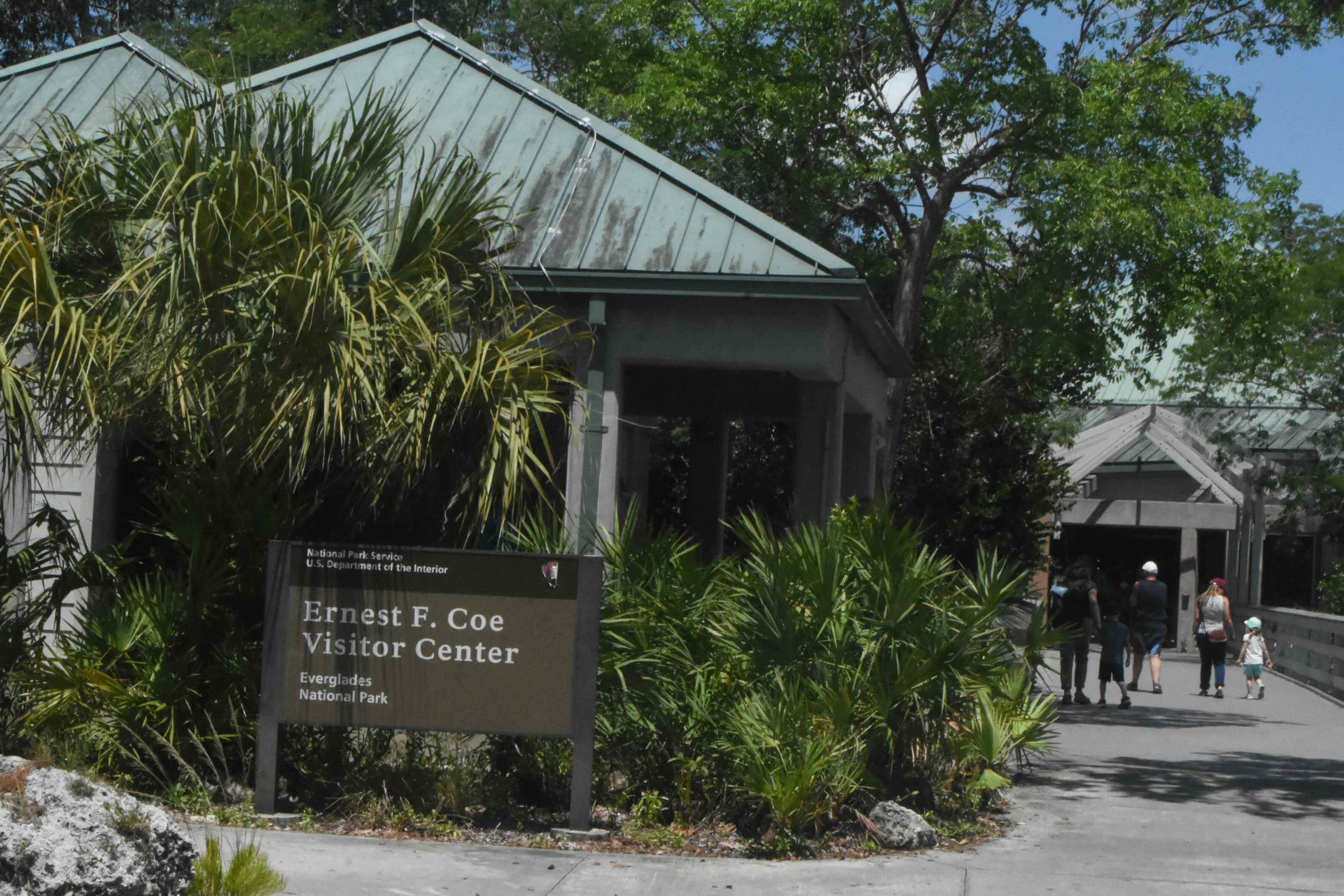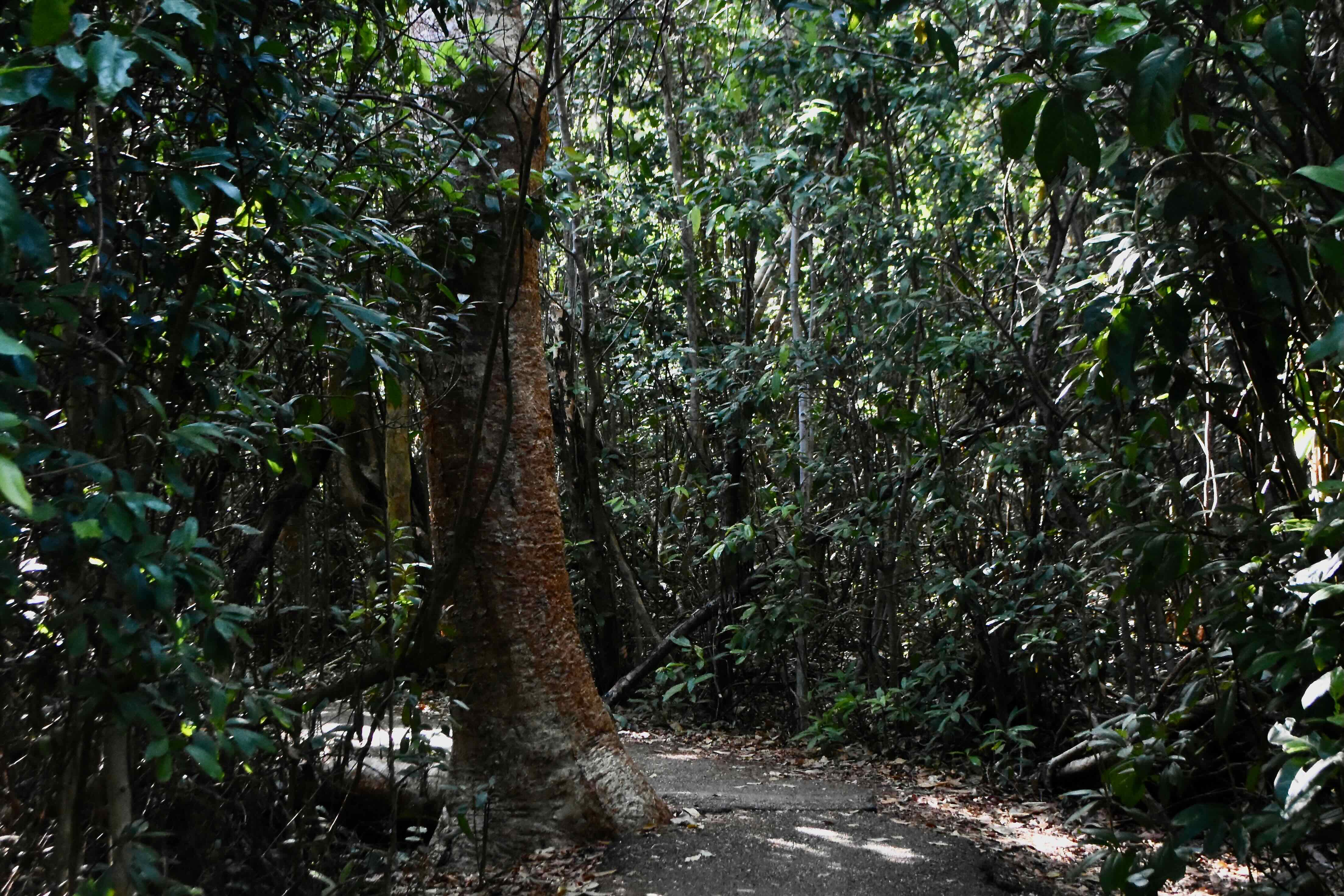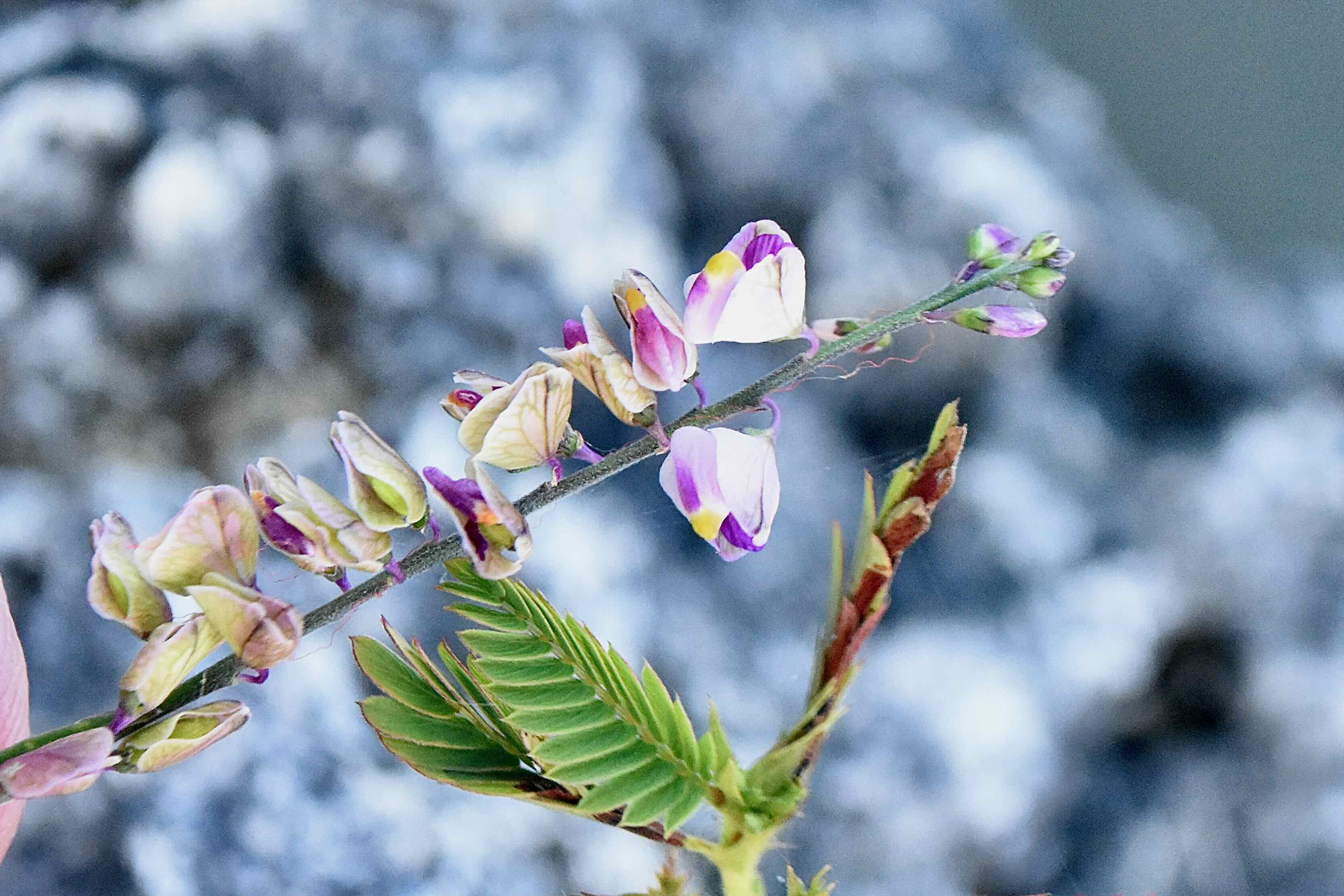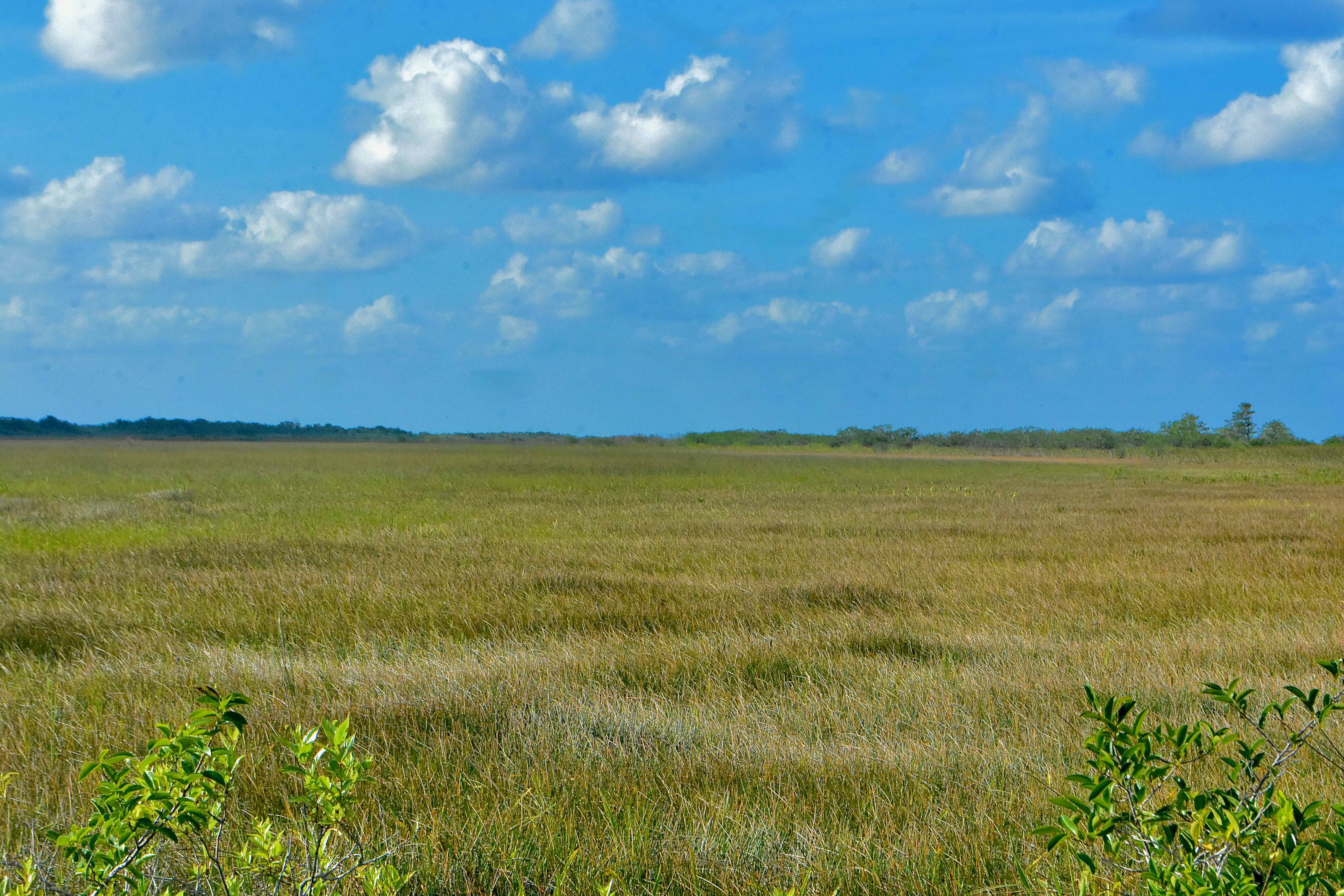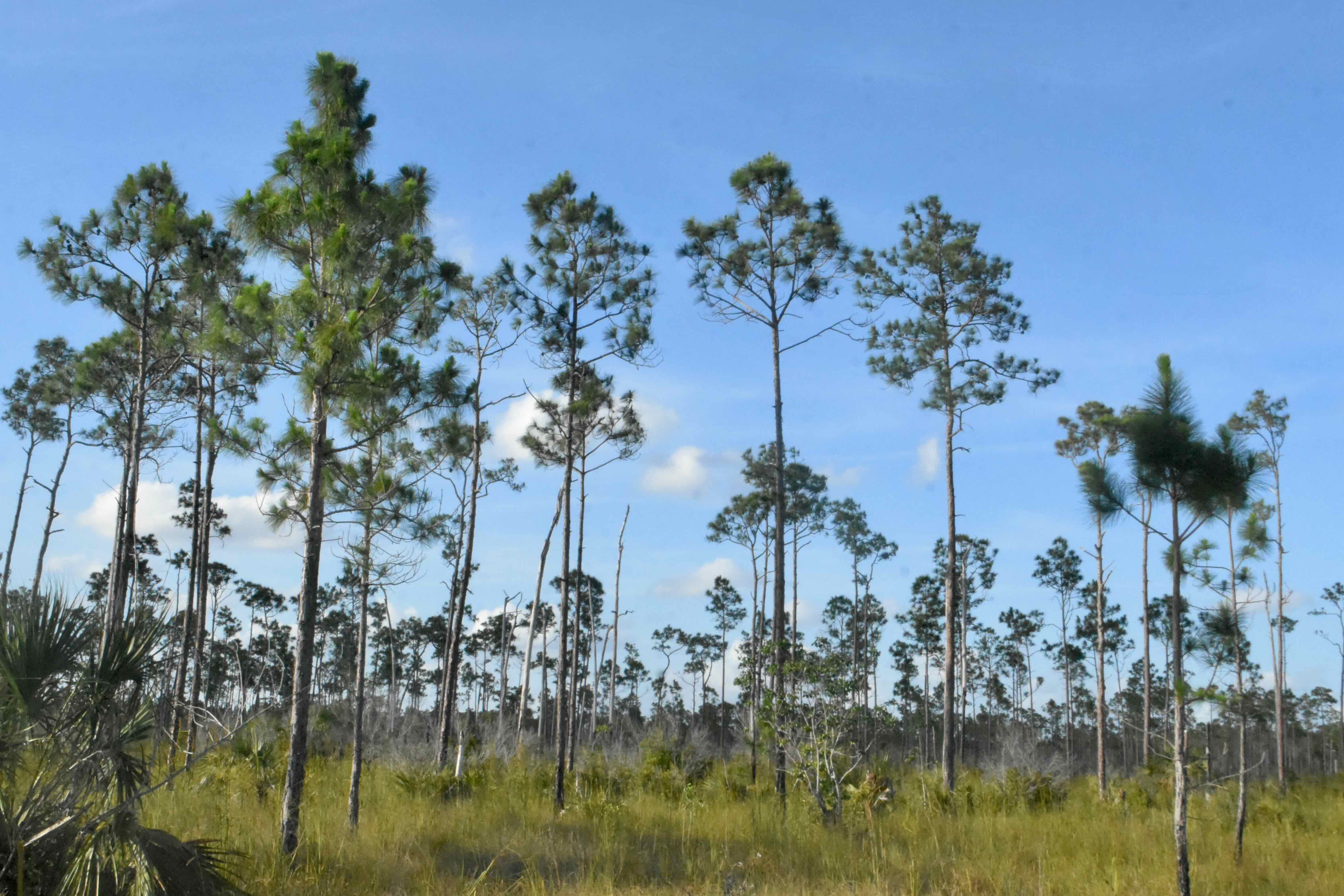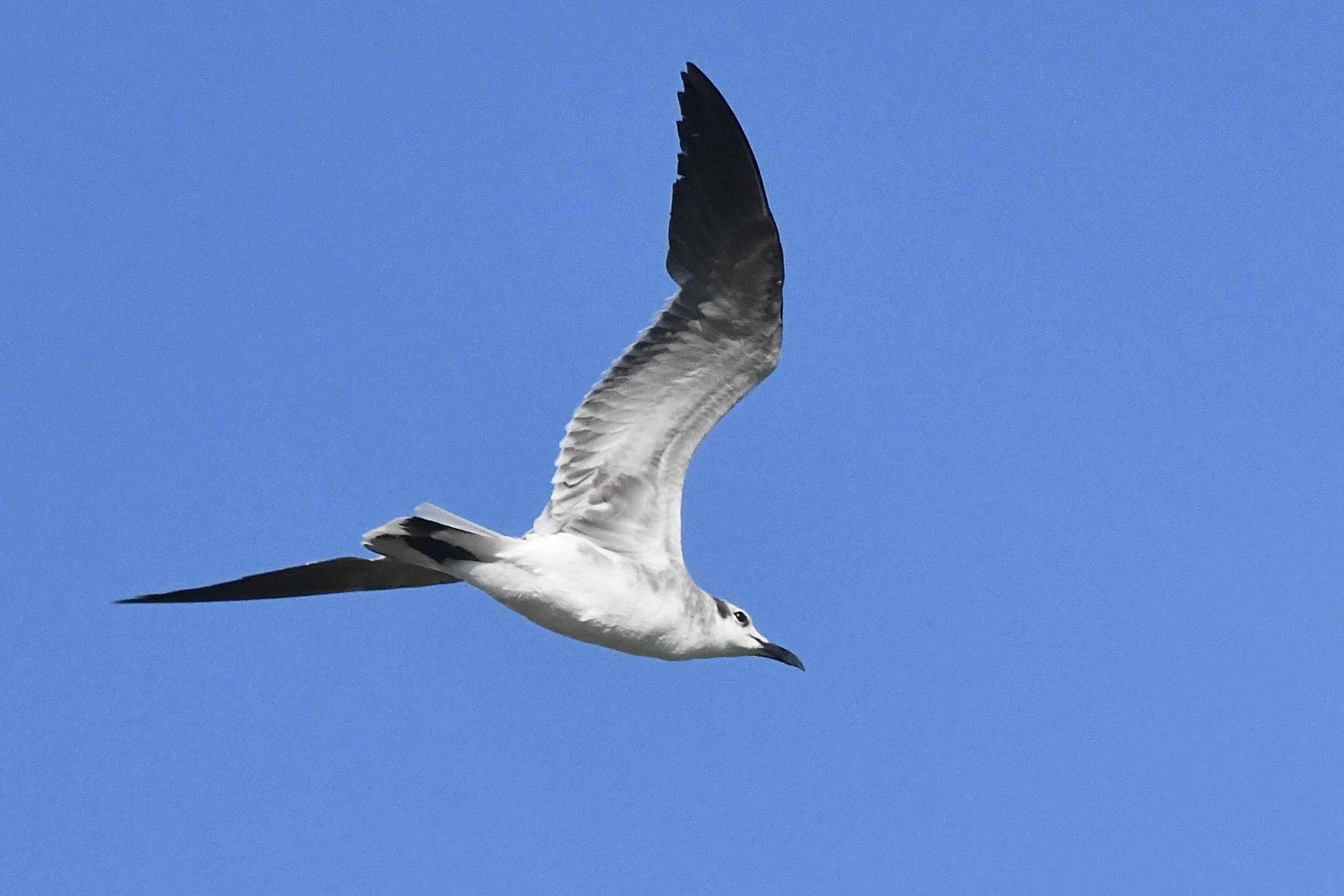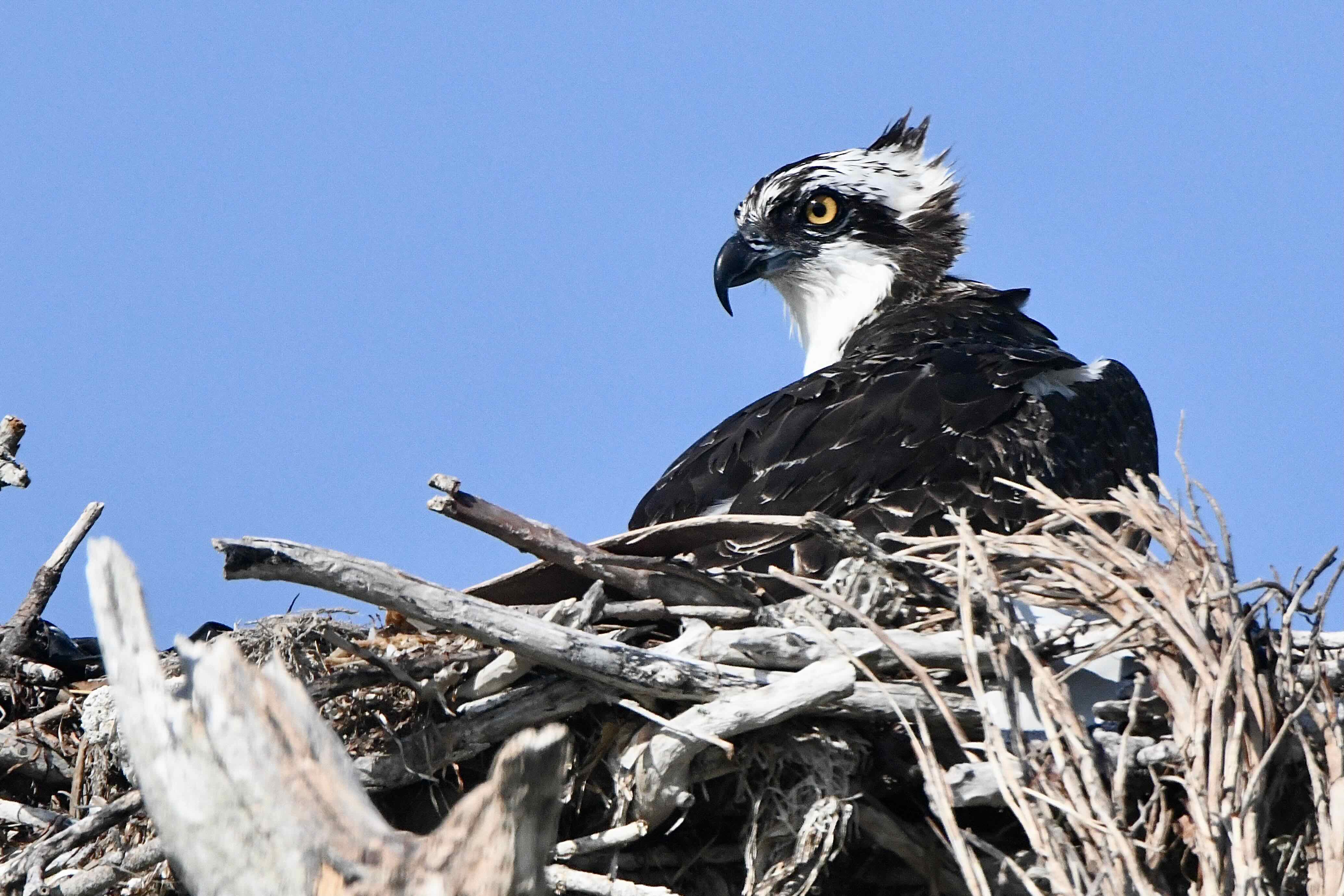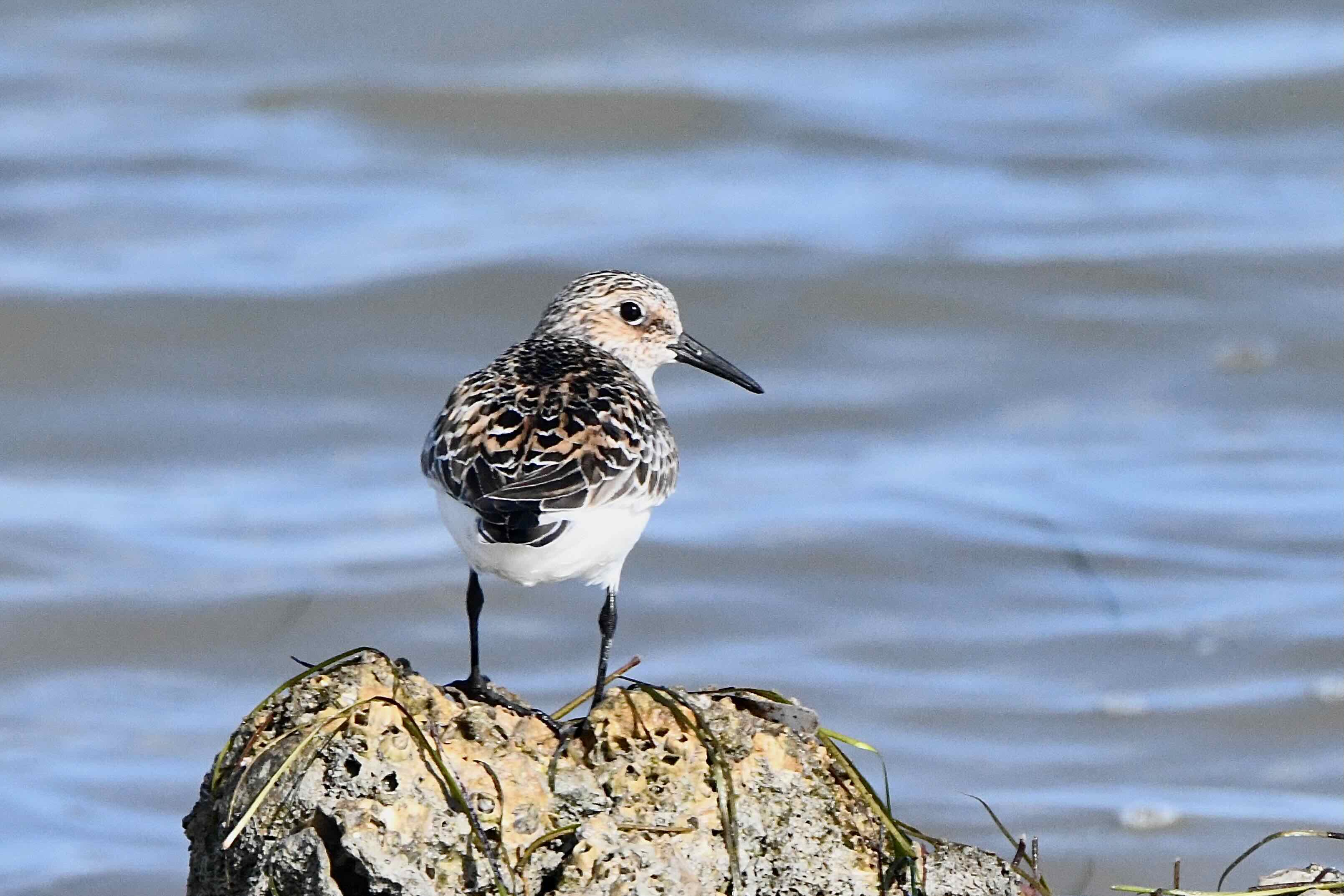Overview: There are three national parks in Florida, Dry Tortugas, Biscayne and Everglades. The oldest, largest and most iconic is Everglades. The park covers 1,509,000 acres of sloughs, marshes, swamps, prairies and ponds. In other words, Marjory Stoneman Douglas's River of Grass. But there is so much more — open pine forests, tropical hammocks, bayheads, pond apple tree islands. And there is Florida Bay, with its mangrove forests and saltwater marshes.
Everglades National Park, the third-largest national park in the lower 48 states, is so vast that a week might be the bare minimum to take it all in. A boat and some serious navigating skills is necessary to explore the scattered islands and watery fringes of the park along Florida Bay. But for most of us who have neither a week or a boat, it's still worth a day trip to Homestead. As a side benefit, the drive to the park goes through some incredible country not typically associated with South Florida.
Everglades National Park is home to some extremely rare animals, including the Florida panther and the American crocodile and hundreds of bird species. Odds are long against seeing a panther but maybe a croc if you find the right spot (unlike their cousins, they hang more in saltwater than fresh). There are walking trails along the main road, including the Anhinga, that are accessible and showcase the variety of wildlife in the park. There are also opportunities for the more adventurous looking to hike and camp the back country.
The first stop on a visit to the park should be to the Ernest Coe Visitor's Center. View the exhibits and learn about the human and natural history of the Everglades. You can study a map, pick up a brochure and talk to a ranger here. There are also ranger-lead tours.
It should be noted that there are two other entrances to Everglades National Park: Shark Valley west of Miami along U.S. 41 and Everglades City near Naples. But this one, Homestead, really is the heart of park.
History: The story of Everglades National Park dates back to 1916 and the creation of Royal Palm State Park thanks to the efforts of the Florida Federation of Women's Clubs and one May Mann Jennings. Jennings, whose husband was a former governor of Florida, serving a single term between 1901 and 1905, and whose father was a former state legislator, helped mobilize political support for Everglades preservation at a time when it was generally viewed as useless swamp that needed to be drained. In 1928, noted architect Ernest Coe wrote a letter to National Park Director Stephen Mather proposing that a national park be established in the southern tip of Florida's peninsula.
That same year, Sen. Duncan B. Fletcher, D-Fla., introduced legislation authorizing the establishment of Everglades National Park. Coe relentlessly championed the cause, and in 1934, Congress passed the bill creating the park and President Franklin D. Roosevelt signed it into law. It took 13 more years to acquire land for the park and Everglades National Park finally opened in 1947 with Coe and President Harry Truman in attendance. Royal Palm State Park's 4,000 acres effectively were its nucleus.
The Everglades was the home of both Tequesta and Calusa tribes for centuries before the Spanish arrived on the scene in the 1500s. Florida briefly became English territory in mid-1700s, and by that time both tribes had all but disappeared. The Everglades later became the domain of the Seminoles and still later, white settlers called Gladesmen, who made their living hunting, trapping and fishing the sloughs, swamps and pinelands of the region. In the aftermath of the Cuban Missile Crisis in 1962, the Army built a Nike Missile base within the park. It was deactivated in 1979, and is open to the public at certain times of the year.
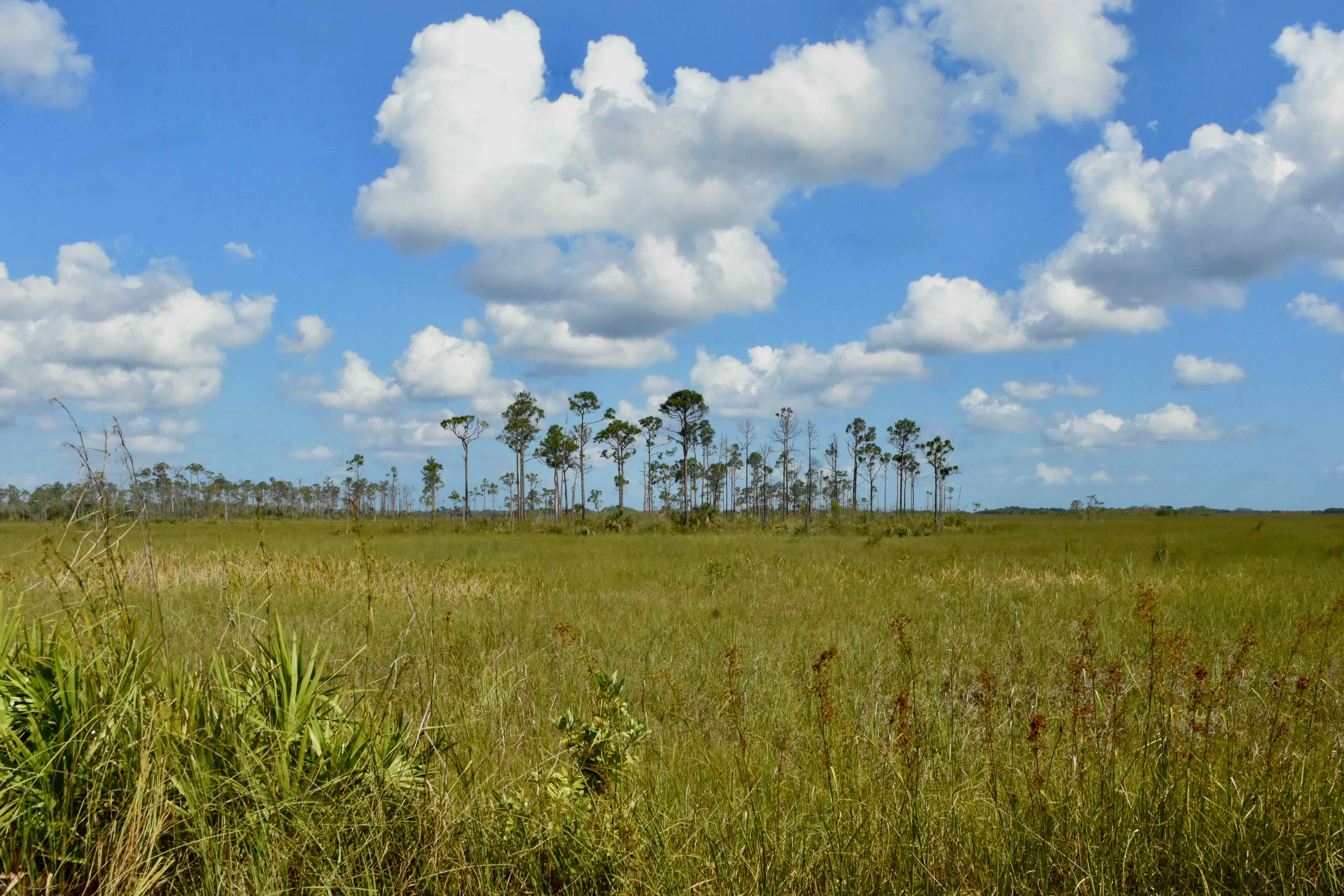
What You'll See: This is, really, the core of Everglades National Park. As you enter the park, you will see the 4,000 acres that inspired people like Jennings, Coe and Marjory Stoneman Douglas to fight for its preservation. Pine rocklands, tropical hardwood hammocks, open water, ponds and sloughs and salt marshes as you approach Florida Bay. While the Shark Valley and Everglades City entrances are somewhat limited as to what you can do, Homestead is wide open in a sense. The possibilities here are endless.
There are alligators here, of course. Lots of them. But there are also rare and endangered American crocodiles within Everglades National Park. There are Florida panthers here and black bears too, but the odds of spotting either are long. Unsurprisingly, Everglades National Park is a hot spot for birders. This is the first place we spotted a swallow-tailed kite, one of the most graceful birds to patrol the skies and one of our personal favorites. Visit Florida Bay and you might spot a few bottled-nosed dolphins. Everglades National Park is that diverse.
Amenities: First on the list is the Ernest Coe Visitors' Center near the park entrance. There are exhibits on both the human and natural history of the park. There are restrooms, drinking water and vending machines. There is the Guy Bradley Visitors' Center at Flamingo in the park's southern end and the Royal Palm Visitors' Center not far from Ernest Coe. There is plenty of parking within the park at its various points of interest. You can hike, bike or paddle the park. At Flamingo, you can launch a boat. Park visitors can rent just about any mode of transportation they might want or book a variety of tours. The list of vendors is too long to include here but you can find it on the park website here. There is some food and lodging within the park at Flamingo.
Nearby: There are a number of smaller preserves along the way, most notably the Southern Glades Wildlife and Environmental Area, some of which might not be open to the public. You can get to the Shark Valley entrance of the park via Krome Avenue but it is a loooooong drive. We've done it.

Links: The Great Florida Birding Trail's page for Everglades National Park Homestead is here. The Institute for Regional Conservation has an inventory of plants for Everglades National Park here.
Of Note: The entrance fee to Everglades National Park is $35 per vehicle or vessel for a seven-day pass as of this writing (April 2025). Click this link for updates and a complete fee schedule. The Homestead Entrance to the park is open 24 hours a day every day of the year.
Cover Photo: The American alligator is the iconic animal of the Everglades, critically important to the well-being of the park's inhabitants. But this isn't an alligator. It's an American crocodile found in the briney waters near the southern end of Everglades National Park.
Second photo: The Everglades really is a series of islands in Marjory Stoneman Douglas's River of Grass. The land where this small cluster of slash pnes sits is slightly higher than its surroundings, dry enough to allow the trees to grow and a place for animals to live. The land is higher still where you find hardwood hammocks.
Third photo: This time, if you guessed an alligator, you would be correct. This guy is peering through the spatterdock near the Anhinga Trail. The importance of the alligator lies in its habit of digging holes, which fill with water during the rainy season and become vital refuges for fish, turtles, birds and other species during the dry season. Despite misperceptions, alligators don't really eat all that much so these gator holes, as they're called, are relatively safe places for the animals that gather in them. They certainly beat the alternative.
Everglades National Park, the third-largest national park in the lower 48 states, is so vast that a week might be the bare minimum to take it all in. A boat and some serious navigating skills is necessary to explore the scattered islands and watery fringes of the park along Florida Bay. But for most of us who have neither a week or a boat, it's still worth a day trip to Homestead. As a side benefit, the drive to the park goes through some incredible country not typically associated with South Florida.
Everglades National Park is home to some extremely rare animals, including the Florida panther and the American crocodile and hundreds of bird species. Odds are long against seeing a panther but maybe a croc if you find the right spot (unlike their cousins, they hang more in saltwater than fresh). There are walking trails along the main road, including the Anhinga, that are accessible and showcase the variety of wildlife in the park. There are also opportunities for the more adventurous looking to hike and camp the back country.
The first stop on a visit to the park should be to the Ernest Coe Visitor's Center. View the exhibits and learn about the human and natural history of the Everglades. You can study a map, pick up a brochure and talk to a ranger here. There are also ranger-lead tours.
It should be noted that there are two other entrances to Everglades National Park: Shark Valley west of Miami along U.S. 41 and Everglades City near Naples. But this one, Homestead, really is the heart of park.
History: The story of Everglades National Park dates back to 1916 and the creation of Royal Palm State Park thanks to the efforts of the Florida Federation of Women's Clubs and one May Mann Jennings. Jennings, whose husband was a former governor of Florida, serving a single term between 1901 and 1905, and whose father was a former state legislator, helped mobilize political support for Everglades preservation at a time when it was generally viewed as useless swamp that needed to be drained. In 1928, noted architect Ernest Coe wrote a letter to National Park Director Stephen Mather proposing that a national park be established in the southern tip of Florida's peninsula.
That same year, Sen. Duncan B. Fletcher, D-Fla., introduced legislation authorizing the establishment of Everglades National Park. Coe relentlessly championed the cause, and in 1934, Congress passed the bill creating the park and President Franklin D. Roosevelt signed it into law. It took 13 more years to acquire land for the park and Everglades National Park finally opened in 1947 with Coe and President Harry Truman in attendance. Royal Palm State Park's 4,000 acres effectively were its nucleus.
The Everglades was the home of both Tequesta and Calusa tribes for centuries before the Spanish arrived on the scene in the 1500s. Florida briefly became English territory in mid-1700s, and by that time both tribes had all but disappeared. The Everglades later became the domain of the Seminoles and still later, white settlers called Gladesmen, who made their living hunting, trapping and fishing the sloughs, swamps and pinelands of the region. In the aftermath of the Cuban Missile Crisis in 1962, the Army built a Nike Missile base within the park. It was deactivated in 1979, and is open to the public at certain times of the year.

What You'll See: This is, really, the core of Everglades National Park. As you enter the park, you will see the 4,000 acres that inspired people like Jennings, Coe and Marjory Stoneman Douglas to fight for its preservation. Pine rocklands, tropical hardwood hammocks, open water, ponds and sloughs and salt marshes as you approach Florida Bay. While the Shark Valley and Everglades City entrances are somewhat limited as to what you can do, Homestead is wide open in a sense. The possibilities here are endless.
There are alligators here, of course. Lots of them. But there are also rare and endangered American crocodiles within Everglades National Park. There are Florida panthers here and black bears too, but the odds of spotting either are long. Unsurprisingly, Everglades National Park is a hot spot for birders. This is the first place we spotted a swallow-tailed kite, one of the most graceful birds to patrol the skies and one of our personal favorites. Visit Florida Bay and you might spot a few bottled-nosed dolphins. Everglades National Park is that diverse.
Amenities: First on the list is the Ernest Coe Visitors' Center near the park entrance. There are exhibits on both the human and natural history of the park. There are restrooms, drinking water and vending machines. There is the Guy Bradley Visitors' Center at Flamingo in the park's southern end and the Royal Palm Visitors' Center not far from Ernest Coe. There is plenty of parking within the park at its various points of interest. You can hike, bike or paddle the park. At Flamingo, you can launch a boat. Park visitors can rent just about any mode of transportation they might want or book a variety of tours. The list of vendors is too long to include here but you can find it on the park website here. There is some food and lodging within the park at Flamingo.
Nearby: There are a number of smaller preserves along the way, most notably the Southern Glades Wildlife and Environmental Area, some of which might not be open to the public. You can get to the Shark Valley entrance of the park via Krome Avenue but it is a loooooong drive. We've done it.

Links: The Great Florida Birding Trail's page for Everglades National Park Homestead is here. The Institute for Regional Conservation has an inventory of plants for Everglades National Park here.
Of Note: The entrance fee to Everglades National Park is $35 per vehicle or vessel for a seven-day pass as of this writing (April 2025). Click this link for updates and a complete fee schedule. The Homestead Entrance to the park is open 24 hours a day every day of the year.
Cover Photo: The American alligator is the iconic animal of the Everglades, critically important to the well-being of the park's inhabitants. But this isn't an alligator. It's an American crocodile found in the briney waters near the southern end of Everglades National Park.
Second photo: The Everglades really is a series of islands in Marjory Stoneman Douglas's River of Grass. The land where this small cluster of slash pnes sits is slightly higher than its surroundings, dry enough to allow the trees to grow and a place for animals to live. The land is higher still where you find hardwood hammocks.
Third photo: This time, if you guessed an alligator, you would be correct. This guy is peering through the spatterdock near the Anhinga Trail. The importance of the alligator lies in its habit of digging holes, which fill with water during the rainy season and become vital refuges for fish, turtles, birds and other species during the dry season. Despite misperceptions, alligators don't really eat all that much so these gator holes, as they're called, are relatively safe places for the animals that gather in them. They certainly beat the alternative.

